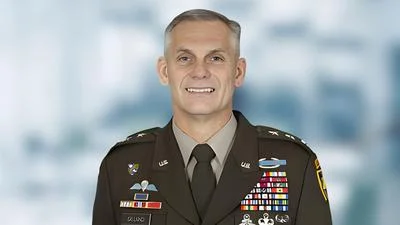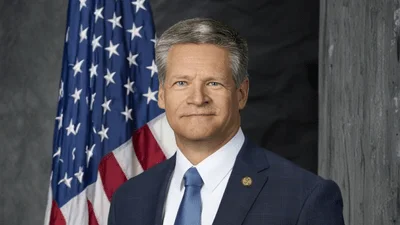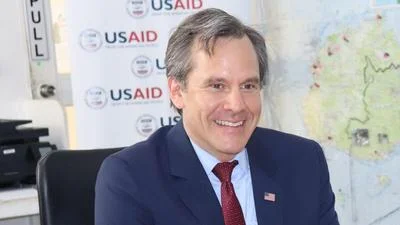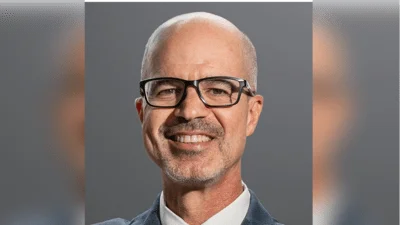The Congressional Record is a unique source of public documentation. It started in 1873, documenting nearly all the major and minor policies being discussed and debated.
“THE CROP INSURANCE REFORM ACT” mentioning the Department of Interior was published in the Senate section on pages S10926-S10929 on Sept. 24, 1998.
The publication is reproduced in full below:
THE CROP INSURANCE REFORM ACT
Mr. GRAMS. Mr. President, I rise today to introduce a bill which takes an important step toward improving the nation's federal crop insurance program--the ``Crop Insurance Reform Act.''
Over the last year, we have witnessed devastating circumstances come together to create a crisis atmosphere for many of our nation's farmers. I know that in my own state of Minnesota, multiple years of wet weather and crop disease--especially scab--coupled with rising production costs and plummeting commodity prices is wiping out family farms in record numbers.
With the increased opportunities that accompany Freedom to Farm come increased risks. We've seen this first hand.
Freedom to Farm can work, but a necessary component of it is an adequate crop insurance program. This component has been missing so far. One of the promises made during debate of the 1996 Farm Bill was that Congress would address the need for better crop insurance.
We must not let another growing season pass without having instituted a new, effective crop insurance program. This overhaul is a major undertaking, but instituting a program of comprehensive reform must be a priority upon our return in January.
And, we must start the debate now so that we can have the best system in place in time. The bill I'm introducing today is a first step. It is the result of months of work from my Minnesota Crop Insurance Work Group.
The Work Group consists of various commodity groups, farm organizations, rural lenders, and agriculture economists. We have also worked closely with USDA's Farm Service and Risk Management Agencies. But it was my primary intention to assemble a committee of farmers and lenders--people who know the situation and have seen the problems first hand.
The Crop Insurance Reform Act is designed to address the coverage decision a farmer must make at the initial stages of purchasing crop insurance.
This bill allows more options for producers to choose from when making risk-management decisions. It essentially provides farmers with an enhanced coverage product at a more affordable price.
Currently, producer premium subsidies range from nearly 42% at the 100% price election for 65% coverage, to only 13% at the 100% price election for 85% coverage. Producers continue to stress that, although the Risk Management Agency has recently provided better product options, the subsidy levels at the higher ends of coverage make them cost prohibitive.
This bill will put in place a flat subsidy level of 29% across the 100% price election and at all levels of coverage. This will adjust the producer premiums to make better coverage more affordable.
When farmers are armed with the necessary risk management tools, everybody saves. The government saves in ad hoc disaster payments, arguably the most expensive way to address any kind of financial crisis. But more importantly, the family farmer saves.
This bill is just the beginning of reform. Over the next few months, I will continue to work with my Crop Insurance Work Group, and my colleagues, Senators Lugar and Roberts, to craft a comprehensive program which directly benefits producers and protects the taxpayers.
______
By Mr. MOYNIHAN:
S. 2518. A bill to enhance family life; to the Committee on Finance.
the enhancing family life act of 1998
Mr. MOYNIHAN. Mr. President, today I introduce the Enhancing Family Life Act of 1998, a bill inspired by an extraordinary set of proposals by one of our nation's most eminent social scientists, Professor James Q. Wilson. On December 4, 1997, I had the honor of hearing Professor Wilson--who is an old and dear friend--deliver the Francis Boyer Lecture at the American Enterprise Institute (AEI). The Boyer Lecture is delivered at AEI's annual dinner by a thinker who has ``made notable intellectual or practical contributions to improved public policy and social welfare.'' Previous Boyer lecturers have included Irving Kristol, Alan Greenspan, and Henry Kissinger. In his lecture, Professor Wilson argued that ``two nations'' now exist within the United States. He said:
In one nation, a child, raised by two parents, acquires an education, a job, a spouse, and a home kept separate from crime and disorder by distance, fences, or guards. In the other nation, a child is raised by an unwed girl, lives in a neighborhood filled with many sexual men but few committed fathers, and finds gang life to be necessary for self-protection and valuable for self-advancement.
Sadly, this is an all-too-accurate portrait of the American underclass, the problems of which have been the focus of decades of unsuccessful welfare reform and crime control efforts. We have tried a great many
``solutions,'' as Professor Wilson notes:
Congress has devised community action, built public housing, created a Job Corps, distributed Food Stamps, given federal funds to low-income schools, supported job training, and provided cash grants to working families.
Yet still we are faced with two nations. Professor Wilson explains why: ``[t]he family problem lies at the heart of the emergency of two nations.'' He notes that as our families become weaker--as more and more American children are born outside of marriage and raised by one, not two, parents--the foundation of our society becomes weaker. This deterioration helps to explain why, as reported by the Census Bureau today, the poverty rate for American children is almost twice that for adults aged 18 to 64 (19.9 percent for children versus 10.9 percent for adults). And it grows increasingly difficult for government to address the problems of that ``second nation.'' Professor Wilson even quotes the Senator from New York to this effect: ``If you expect a government program to change families, you know more about government than I do.''
Even so, Jim Wilson, quite characteristically, has fresh ideas about what might help. On the basis of recent scholarly research, and common sense, he urged in the Boyer lecture that we refocus our attention on the vital period of early childhood. I was so impressed with his lecture that afterward I set about writing a bill to put his recommendations into effect.
The Enhancing Family Life Act of 1998 contains four key elements, all of which are related to families. First, it supports ``second chance'' maternity homes for unwed teenage mothers. These are group homes where young women would live with their children under strict adult supervision and have the support necessary to become productive members of society. The bill provides $45 million a year to create such homes or expand existing ones.
Second, it promotes adoption. The bill expands the number of children in foster care eligible for federal adoption incentives. Too many children drift in foster care; we should do more to find them permanent homes. The bill also encourages states to experiment with ``per capita'' approaches to finding these permanent homes for foster children, a strategy Kansas has used with success.
Third, it funds collaborative early childhood development programs. Recent research has reminded us of the critical importance of the first few years of a child's life. States would have great flexibility in the use of these funds; for example, the money could be used for pre-school programs for poor children or home visits of parents of young children. It provides $3.75 billion over five years for this purpose.
Finally, the legislation creates a new education assistance program to enable more parents to remain home with young children. A parent who temporarily leaves the work force to raise a child would be eligible for an educational grant, similar to the Pell Grant, to help the parent enter, or re-enter, the labor market with skills and credentials necessary for success in today's economy once the child is older.
Mr. President, this bill is a starting point. It is what Professor James Q. Wilson and I believe just might make a difference. We would certainly welcome the comments of others. And I would commend to the attention of Senators and other interested persons the full text of Professor Wilson's lecture ``Two Nations,'' which is available from my office or from the American Enterprise Institute. I ask unanimous consent that a summary of the legislation be included in the Record.
There being no objection, the summary was ordered to be printed in the Record, as follows:
The Enhancing Family Life Act of 1998--Summary
section 1. short title
This Act may be cited as the ``Enhancing Family Life Act of 1998.''
section 2. findings
The Congressional findings support the importance of families in society and social policy.
Title I--Assistance for Children
section 101. ``second chance homes''
The bill would provide $45 million annually to establish or expand ``second chance'' maternity homes for unwed teenage mothers. These are group homes where mothers live with their children under adult supervision and strict rules while learning good parenting skills.
section 102. adoption promotion
The bill would expand the number of ``special needs'' children in foster care for which federal adoption subsidies are available. It de-links'' eligibility for these subsidies from the income level of the foster child's biological parents. (Under current law, a foster child determined to have special needs only qualifies for a federal adoption subsidy if the child's birth parents are welfare-eligible.) The subsidies would help adoptive parents meet the particular emotional and physical challenges of troubled children and so they can provide the children permanent homes.
In addition, last year's ``Adoption and Safe Families Act'' authorizes the Department of Health and Human Services to grant child welfare demonstration waivers to ten states each year. The bill would reserve three of each ten waivers to states willing to test ``per capita'' approaches to finding permanent homes for children in foster care, as Kansas has done. Under a per capita approach, states or localities contract on a fixed sum basis with agencies to reunite foster children with their biological families or place them with adoptive parents. Because the agency, typically a non-profit social service agency, receives a fixed sum per child (rather then unlimited reimbursement of costs) the agency may settle the child in a permanent home more quickly.
section 103. early childhood development
The bill provides $3.75 billion over five years for collaborative early childhood development programs. Recent research has demonstrated the importance of the earliest years in a child's life in the child's intellectual and emotional development. States could use the funds for home visiting programs, parenting education, high-quality child care, and preventive health services. States would have great flexibility in deciding which services to provide.
section II--``parent grants''
The bill would create a new education assistance program to provide grants to parents who choose to remain at home with young children. The grants would allow parents to obtain the training, or re-training, needed to prosper and advance careers after a period of time outside the labor force. A custodial parent with children under the age of six and no earned income, welfare, or SSI receipt would be eligible to receive a benefit equivalent to the largest Pell Grant available for that year (about $2,700 in FY 1998). The benefit--to be called a ``Parent Grant''--could only be used for expenses associated with post-secondary education or completion of high school. Parents could accumulate grants
(one for each year outside of the labor market) but would be required to use the grant within 15 years of the year for which the grant was earned. Eligibility would be subjected to income limits ($75,000/year maximum, subject to revision on the basis of cost estimates). The program would be administered by the Education Department, in parallel with Pell Grants and other financial aid programs.
______
By Mr. McCAIN (for himself and Mr. Burns):
S. 2519. A bill to promote and enhance public safety through use of 9-1-1 at the universal emergency assistance number, further deployment of wireless 9-1-1 service, support of States in upgrading 9-1-1 capabilities and related functions, encouragement of construction and operation of seamless, ubiquitous and reliable networks for personal wireless services, and ensuring access to Federal Government property for such networks, and for other purposes; to the Committee on Commerce, Science, and Transportation.
WIRELESS COMMUNICATIONS AND PUBLIC SAFETY ACT OF 1998
Mr. McCAIN. Mr. President, today I am introducing the Wireless Communications and Public Safety Act of 1998 to help build a national wireless communications system and save lives. I would like to thank Senator Burns for co-sponsoring this important legislation with me, and I look forward to working with him to move this legislation forward during the remainder of the Congress and the next Congress.
Mr. President, when a person is seriously injured, in a car crash or a violent crime or in some other way, every minute counts. Medical trauma and public safety professionals speak of the ``golden hour''--
the first hour after serious injury when the greatest percentage of patient lives can be saved. The quicker that person gets medical help, the greater the chances of survival.
We would like people to be able to get medical help as fast as possible after serious injury. As a practical matter, it takes time--
often a half-hour in an urban area or an hour in a rural area--before an ambulance completes the job of getting to the scene of an accident and transporting the injured to a medical facility, where doctors can go to work saving the injured person. This bill is designed to help cut down that medical response time for millions of Americans, by helping to make sure that people can use their wireless telephones to call 9-1-1 immediately to get the ambulances rolling.
More than 60 million Americans carry wireless telephones. Many people carry them for safety reasons. People count on those phones to be their lifelines in emergencies. A parent driving down an interstate highway with children in the back seat draws comfort from knowing that if the car is involved in a crash, he or she can call 9-1-1 for help and an ambulance will be rolling in seconds. An older American driving alone on a long trip feels more comfortable knowing that if an accident occurs or sudden illness strikes, he or she can use the wireless phone to dial 9-1-1 for help and the state police will be on the way.
But there's a big problem. In many parts of our country, when the frantic parent or the suddenly disabled older person punches 9-1-1 on the wireless phone, nothing happens. In many areas of the country, 9-1-
1 is not the emergency number, or there simply is no wireless telephone service at all. If a wireless telephone isn't within range of a wireless tower, a wireless call can't go through. The ambulance and the police won't be coming. You may be facing a terrible emergency, but you're on your own.
The same problem arises even if an emergency occurs within range of a wireless tower, if a person is too injured to make a 9-1-1 call, or can make the call but cannot give his or her location.
Mr. President, this bill can be called the 9-1-1 bill--its main purposes are to expand the areas covered by wireless telephone service so that more people in more places can call 9-1-1 systems so that they can deliver more information, like location and automatic crash notification data. The bill is designed to tie our citizens through their wireless telephones to the medical centers, police, and firefighters who can help them in emergencies.
The bill has four main elements.
First, it makes 9-1-1 the universal emergency telephone number. I suspect that most Americans think that 9-1-1 already is the emergency number everywhere, but it isn't. There are many places in America where, even if you can get a telephone connection, 9-1-1 isn't the right number to call for help. This legislation will reduce the danger of not knowing what number to call. The rule in America ought to be uniform and simple--if you have an emergency, wherever you are, dial 9-
1-1. The bill sets a national policy for us all to pursue together, but, instead of imposing a federal mandate for executing that policy, allows the states and localities to decide how best to further that policy in their areas.
The second key element of the bill is a system of grants to assist the states and local governments in developing, coordinating, and carrying out their plans to make wireless service available to more citizens and to upgrade their 9-1-1 systems so they can provide the location of wireless callers. The bill gives the states maximum flexibility in designing their plans to qualify for the grants. It is written carefully so that it is not a federal mandate, and we will not have federal bureaucrats micro-managing wireless telephone companies, state and local public safety programs, or hospital emergency rooms.
The people who run our nation's 9-1-1 systems, and increasingly the elected officials who employ them, know they have a growing challenge in this area. More and more Americans are using wireless telephones to communicate, and there are over 83,000 wireless emergency calls a day now. But the technology receiving those calls is often outdated, and new local technology needs to be implemented. By offering substantial federal grants funded from the fees the government receives from wireless carriers who place their towers on federal land, the bill encourages the states to bring the stakeholders together to make the decisions necessary to deploy these life-saving technologies. The implementation problems here are not technological; they are financial and legislative. This bill will provide federal support, but the key leadership and decisions will come from state and local officials.
The the third key element of the bill is research and development of new lifesaving technology for motor vehicles. Proper medical care could be dispatched almost immediately if a car that was involved in a crash automatically signaled to public safety officials that the car had crashed, where it had crashed, and how bad the crash was. The trauma experts tell us they can predict the kinds of injuries a victim has this crash data--so they will know whether to send a helicopter, an advanced care ambulance, or just a wrecker and a ride home. We can use wireless technology to make these automatic reports. This bill will authorize the necessary investments to develop the know-how to tie together our cars, our public safety officials, and our hospitals for rapid response in vehicles emergencies
The fourth key element of this legislation is using federal property to help expand the wireless network. Current law and Administration policy say that federal agencies should encourage wireless facilities on federal property so as to expand the availability of wireless service, but agencies have been slow to open up their land and buildings. This bill will establish a clear and enforceable policy of allowing wireless facilities on federal property when it doesn't interfere with the agency's mission or use of the property. The agency will be allowed to charge fees for the use of the property, and those fees will go into a fund that will pay for grants to states and crash-
notification investments under the bill.
It is also important to note what this bill does not do. It does not affect in any way the ability of state or local governments to impose taxes or fees on any business. It does not preempt in any way the current power of state and local government regarding antenna siting over property under their authority. And, indeed, it provides an explicit statutory requirement of notice and comment for state and local officials on siting applications for use of federal property. These three changes I made from earlier drafts resolve some of the concerns that were raised by some leaders of local and county governments.
Some organizations sought additional changes to the legislation.
The Department of the Interior, for example, wanted to change the provision on judicial review of federal agency denials of requests for access to federal property so that the burden of proof in court would be on the person challenging the agency's decision not to grant the requested access. This bill instead adopts the standard used in the Freedom of Information Act, which puts on the agency the burden of sustaining its action. Since the agency has superior access to all the relevant information, it is appropriate for the agency to bear the burden of going forward with evidence and persuading the court of the correctness of the agency's decision.
Also, some have suggested that the bill should be changed so that the sate and local law would apply to the citing of wireless antennas on federal property. That would be inconsistent with current law and run counter to the basis purpose of this legislation. To allow state and local officials to extend state and local zoning laws to the placement of antennas on federal property would give states and localities an unprecedented ability to control decisions by federal officials with respect to federal property, and reduce the revenue generated by the federal leases or antenna siting. We simply cannot have a situation in which a locality could be allowed to hold the interests of the region or the country hostage to parochial interests. The requirement in my legislation that state and local officials have notice and an opportunity to comment with respect to requests for antenna siting on federal property gives state and local officials their appropriate role. They will have the opportunity to present their views, but will not have a veto over placement of antennas on federal property. It is important to remember what is at issue here--the ability of people to call for help in emergencies and get a prompt public safety response--
in short, save lives.
This legislation has been developed in consultation with a wide range of groups that have great expertise in the subjects covered by the legislation, including state and local officials who run our nation's 9-1-1 systems, trauma experts, the American Automobile Association, the wireless industry and others. The bill has the strong support of a diverse coalition that includes these and many other groups. To the extent that some groups have concerns about a few of he bill's provisions, I intend to continue to work with them to try to address these concerns.
Mr. President, this bill is an important step forward to helping state and local emergency agencies do their jobs, offering them significant grants to improve their capabilities. This bill also will go a long way toward helping the nation expand its wireless network. It will help make sure that Americans everywhere can dial 9-1-1 to summon prompt assistance in an emergency.
I look forward to working with my colleagues on the Commerce Committee on this important life-saving legislation, an I urge all my colleague to support it.
____________________








